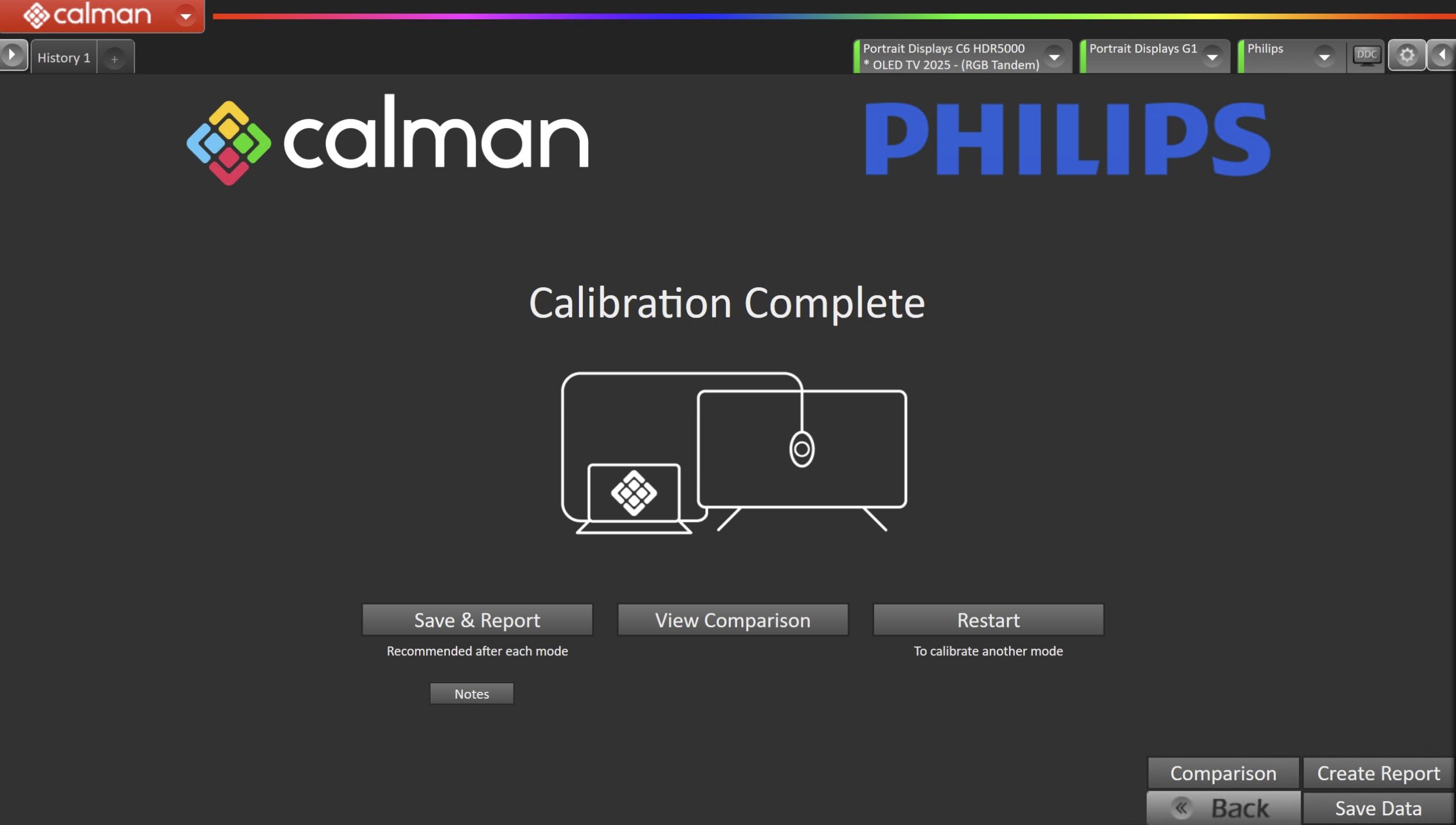Calman Studio and Ultimate support direct calibration of 2025 Philips OLED, MiniLED (MLED), and LCD televisions. Using Philips’ integrated calibration interface, Calman communicates with the display over a local network connection to perform automated grayscale, color, and gamma adjustments. This ensures accurate, reference-grade image performance for both professional and consumer applications.


Calman Required Version
- Calman Studio or Ultimate v5.16.5 or higher
Hardware Requirements
- Calman Ready Philips TV
- LCD
- PUS8600
- PUS9xx0
- MLED
- MLED8x0
- MLED9x0
- OLED
- OLED9x0
- OLED8x0
- OLED7x0
- LCD
- Calman Compatible Meter
- Calman Compatible Pattern Generator
Step 1
- From the Calman Menu in the top-left, choose Open Workflow Template -> Calman Ready and then Philips.
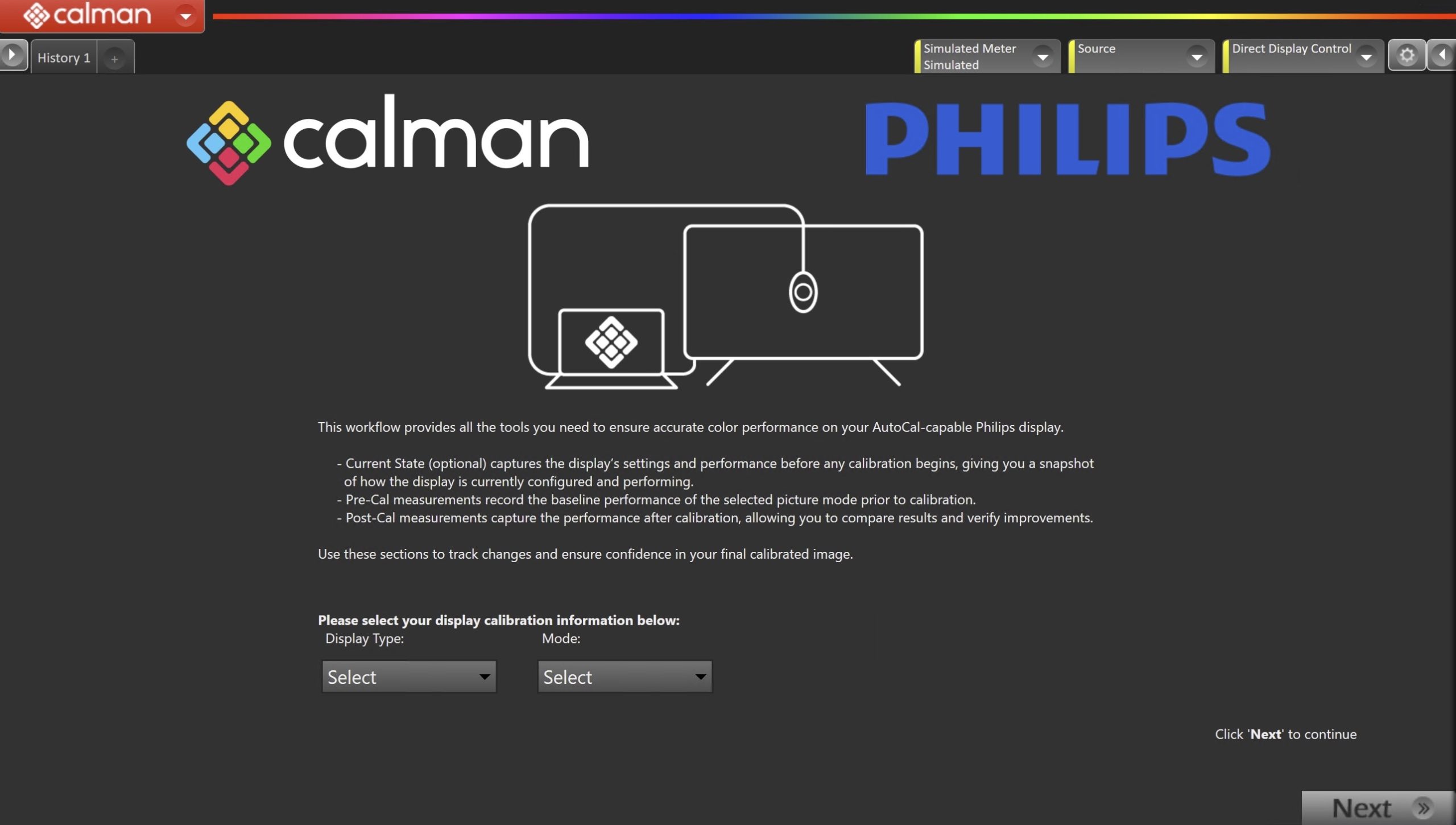
- On the introduction screen, select your display type (LCD/OLED) and calibration mode (SDR/HDR) from the dropdown and click Next to proceed to Hardware Setup
Step 2
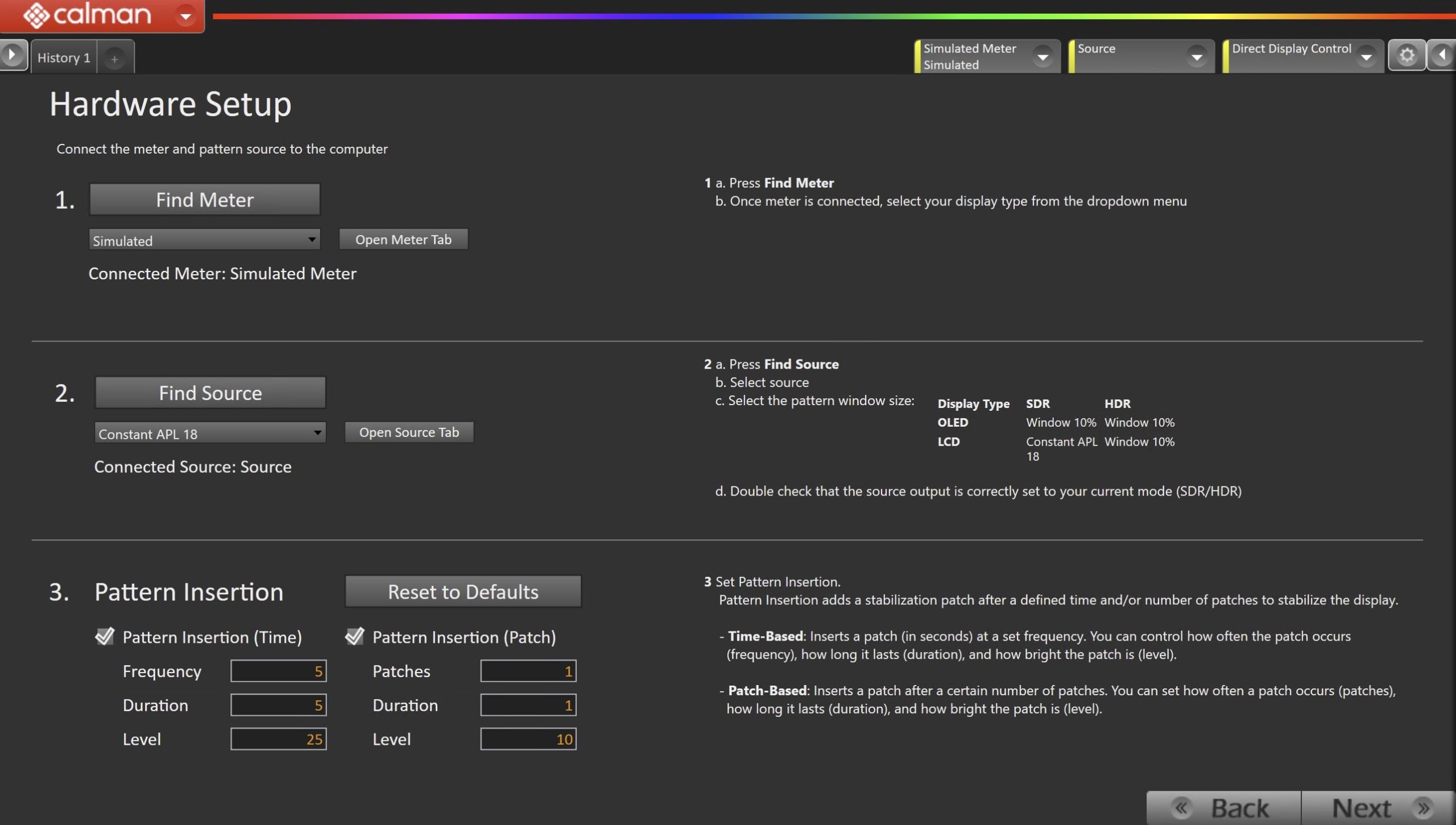
- Plug your meter into a USB port on the computer and press the Find Meter button on the left.
- When your meter is connected, select your display type from the dropdown
- Connect Pattern Source to your computer.
- Click the Find Source button then select your source
- Select the pattern window size and delay
- OLED
- Window 10%
- LCD/MLED
- SDR: Constant APL 18
- HDR: Window 10%
- OLED
- Ensure your source is set to SDR or HDR corresponding to your choice in Step 1
- Set Pattern insertion
- Click the Reset to Defaults button to set the appropriate pattern insertion for the display and calibration type in Step 1
- LCD models do not need Pattern Insertion enabled.
- Click the Reset to Defaults button to set the appropriate pattern insertion for the display and calibration type in Step 1
- Click Next to proceed
Step 3
- Select the calibration targets
- Confirm/configure your calibration targets. These will be automatically set to common defaults by the options from Step 1
- Configuration Examples:
| SDR | HDR |
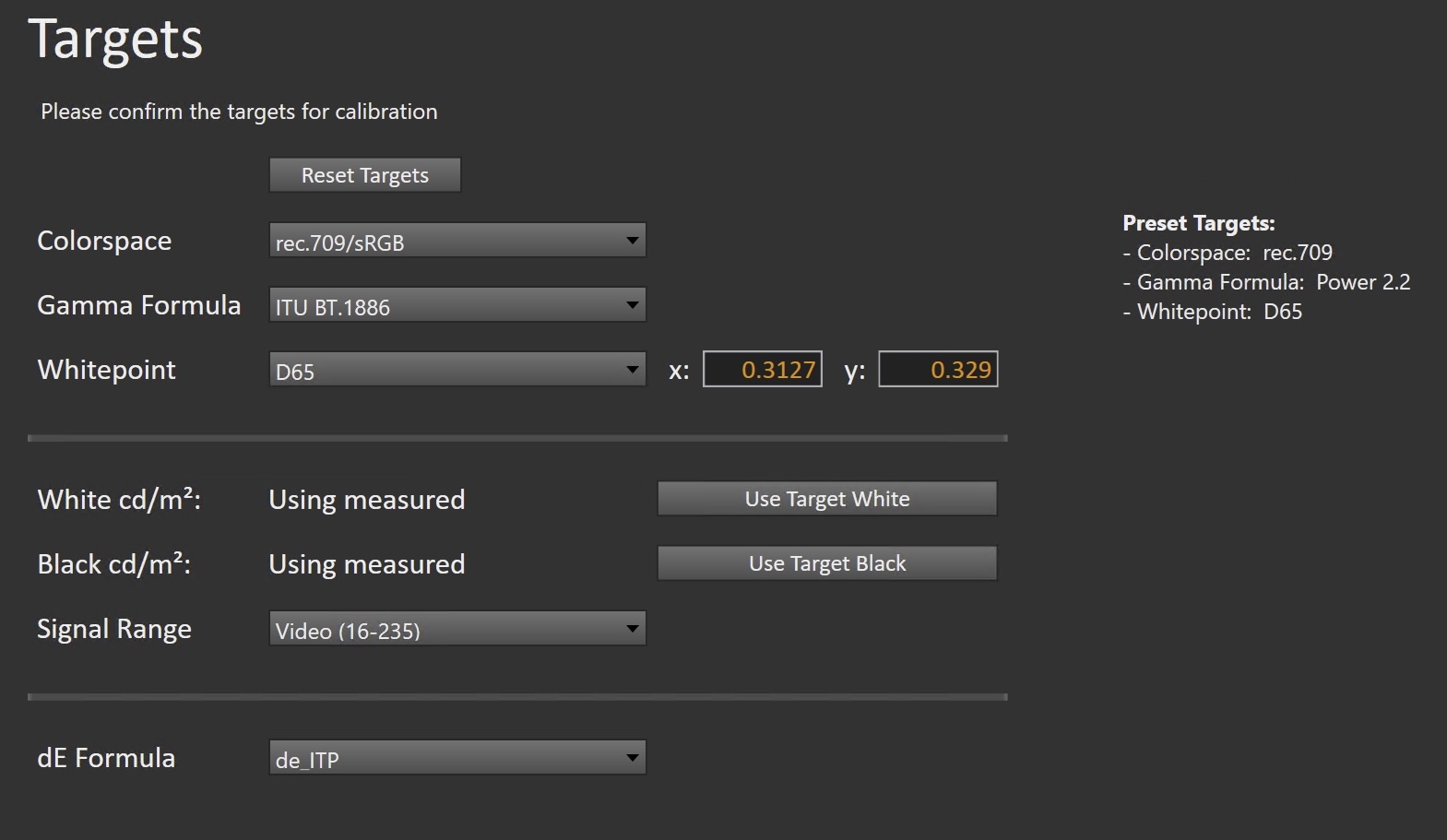 |
 |
(Optional) Current State Measurements
- This workflow page is intended to document the monitor’s current operational state before establishing any DDC connection or selecting a calibration mode.
- This step can be skipped if documenting the current state is not needed. Another set of Pre-Calibration measurements will be taken in later steps.
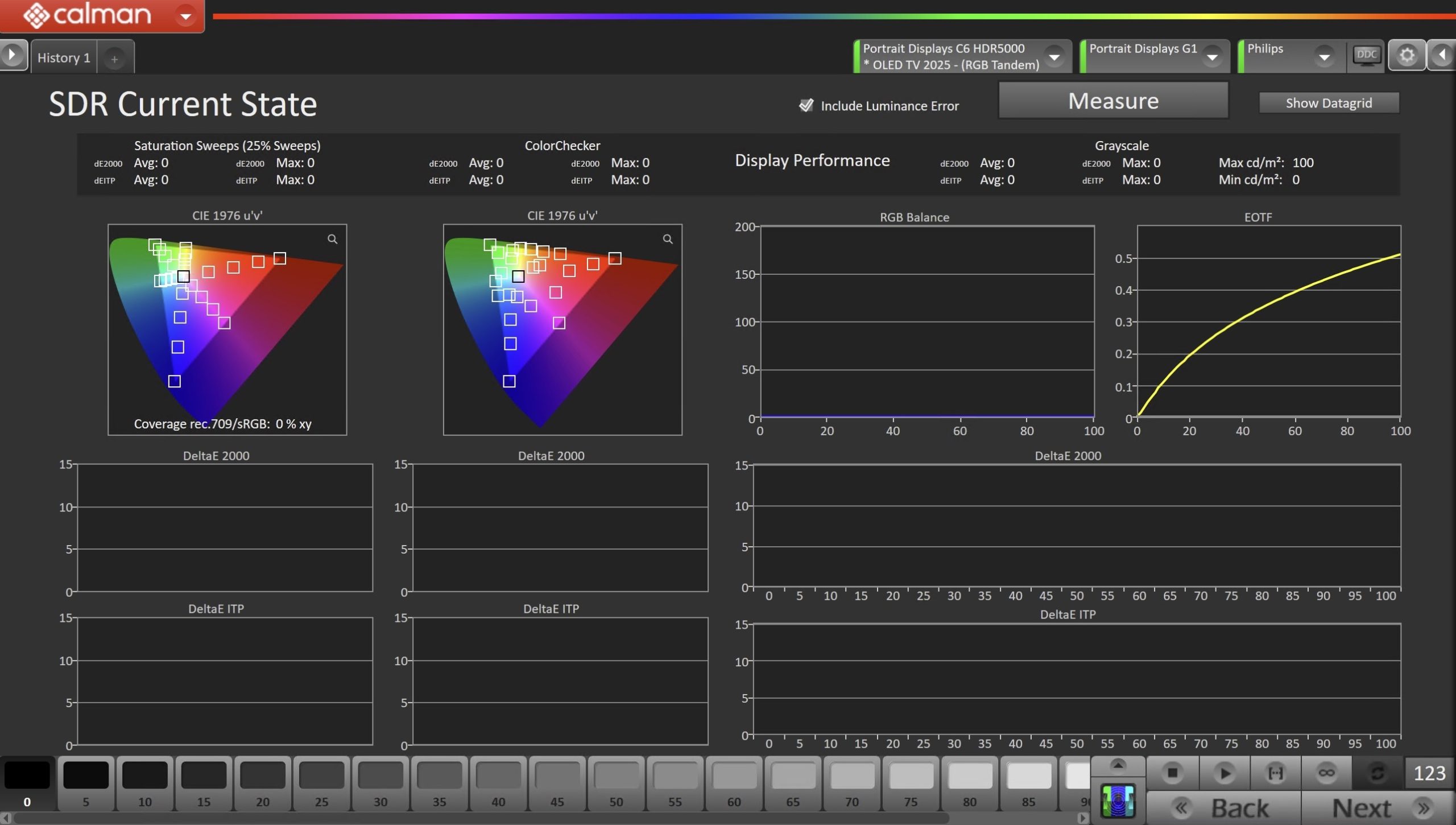
- To take Current State Measurements, click the Measure button to measure the display’s grayscale and color response.
- Click Next to proceed
Step 4

- Connect your Philips TV
- On your TV:
- Press the Menu button on the Remote
- Select Frequent Settings>All Settings>Picture>AI Picture
- Select Calman (if locked press 225626)
- Press the Green button on the remote to initiate calibration connection
- The TV will show the IP address once in connection mode, enter that IP address in the field and press the ‘Find Philips TV’ button
- Click the Find Display Button
- Select Philips and your TVs year/model from the dropdown
- Enter the IP address assigned to the TV
- To find the IP address: Press Menu to open the monitors settings and scroll down to System
- Click Connect
- Enter the IP address assigned to the TV
- On your TV:
Pre-Calibration Measurements
- This workflow page is intended to document the target picture mode prior to calibration.
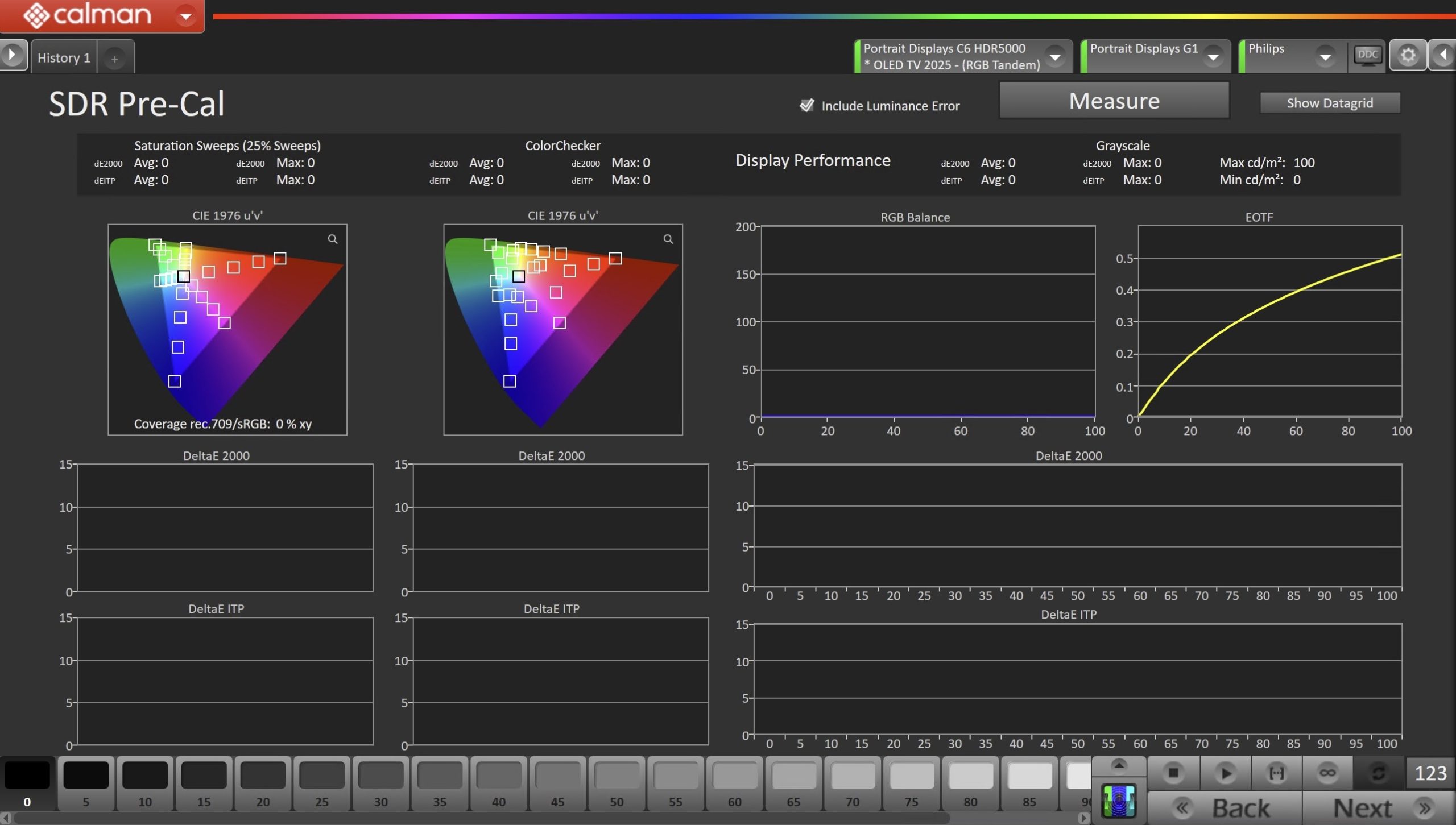
- To take Pre-Calibration Measurements, click the Measure button to measure the display’s rayscale and color response.
- This will provide a point of reference to compare the calibration results
- Click Next to proceed
Step 5
- Here, the Calman picture mode will be reset to prepare for calibration.

- Click the Reset button. This resets and prepares the picture mode for calibration.
- Click Next to proceed
SDR Only – Measure and set Luminance
- Here, you can adjust the monitor’s Backlight setting to one that meets or exceeds your target luminance
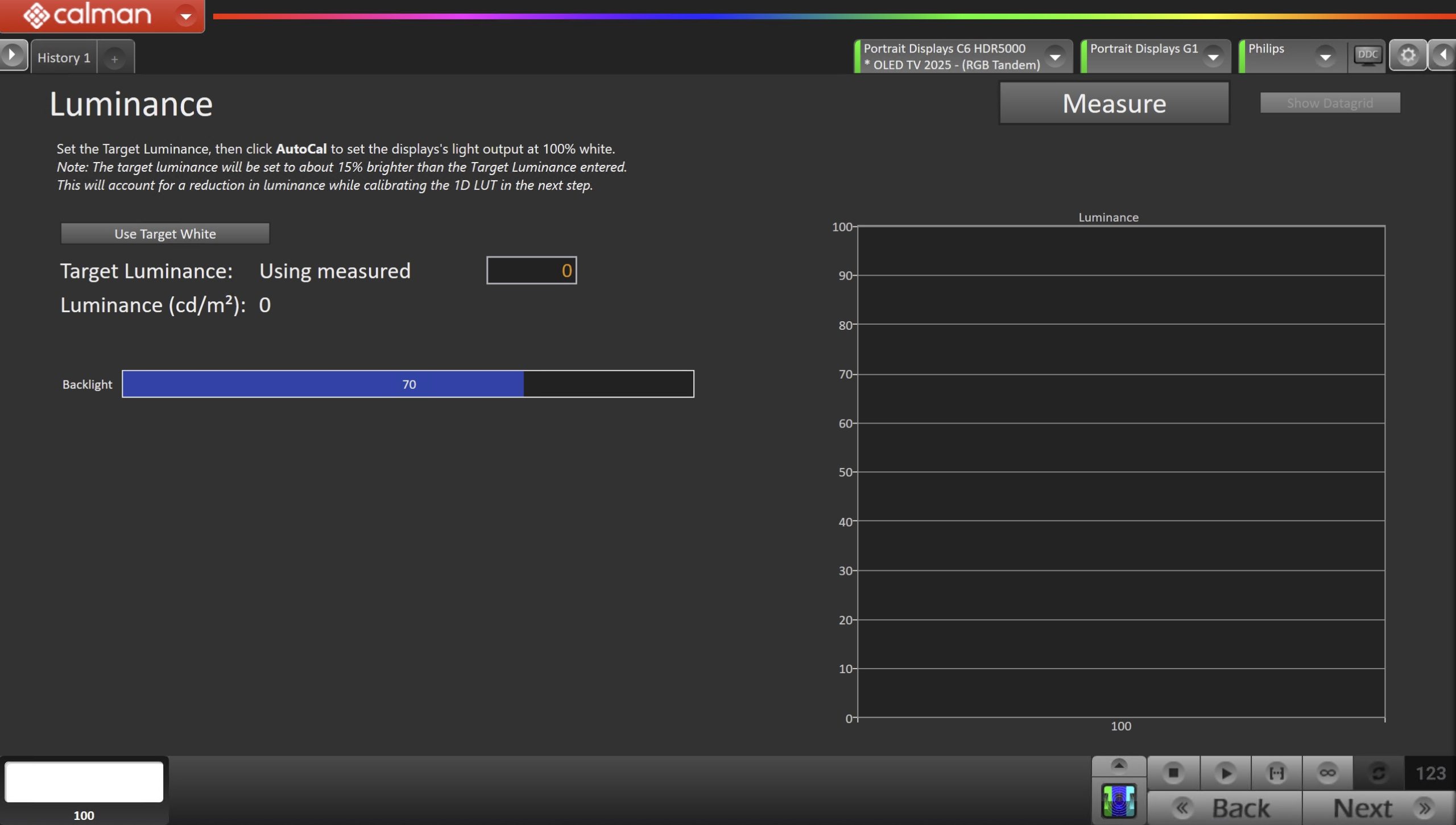
- Click Measure and adjust the Backlight slider as needed.
- Click Next to proceed
Step 6
- Here, Calman will adjust the Multipoint Greyscale.

- Click the AutoCal button and select the correct data points in the AutoCal Dialog to auto-calibrate the Grayscale/Luminance response on the display.
- This should match the video range you chose in Step 1.
- Click OK to begin greyscale AutoCal.
- When AutoCal is complete, click the Next button to proceed.
Step 7
- On this page, Calman will calibrate the Color Management System.
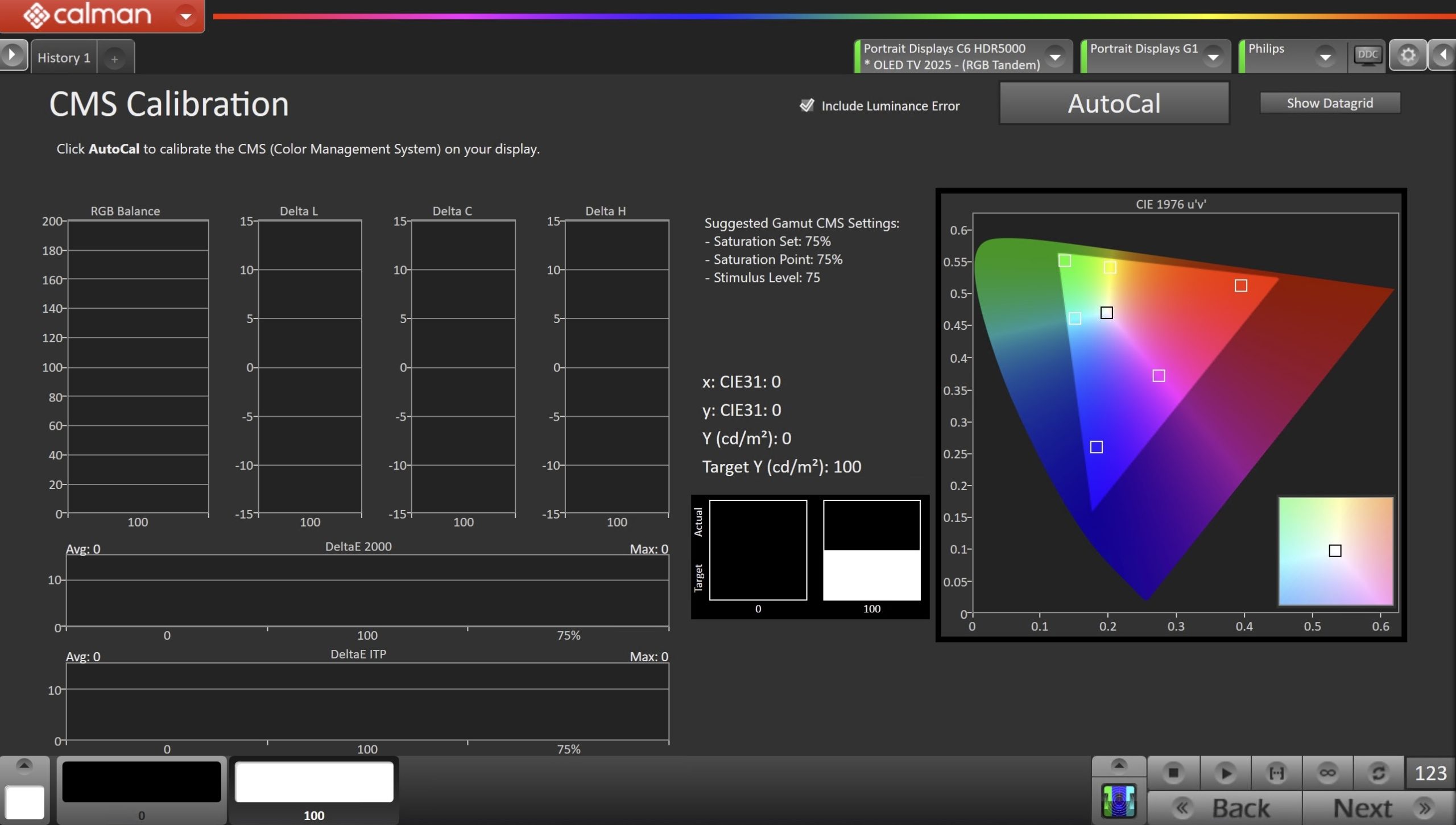
- Click the AutoCal button to open the AutoCal dialog
- Recommended CMS Settings (SDR or HDR):
- Saturation Set: 75% Only
- Saturation Point: 75%
- Stimulus Level: 75%
- Recommended CMS Settings (SDR or HDR):
- Click OK to begin the colorspace AutoCal process
- When AutoCal is complete, click the Next button to proceed
Step 8
- In this step, you’ll take measurements of the calibration results.
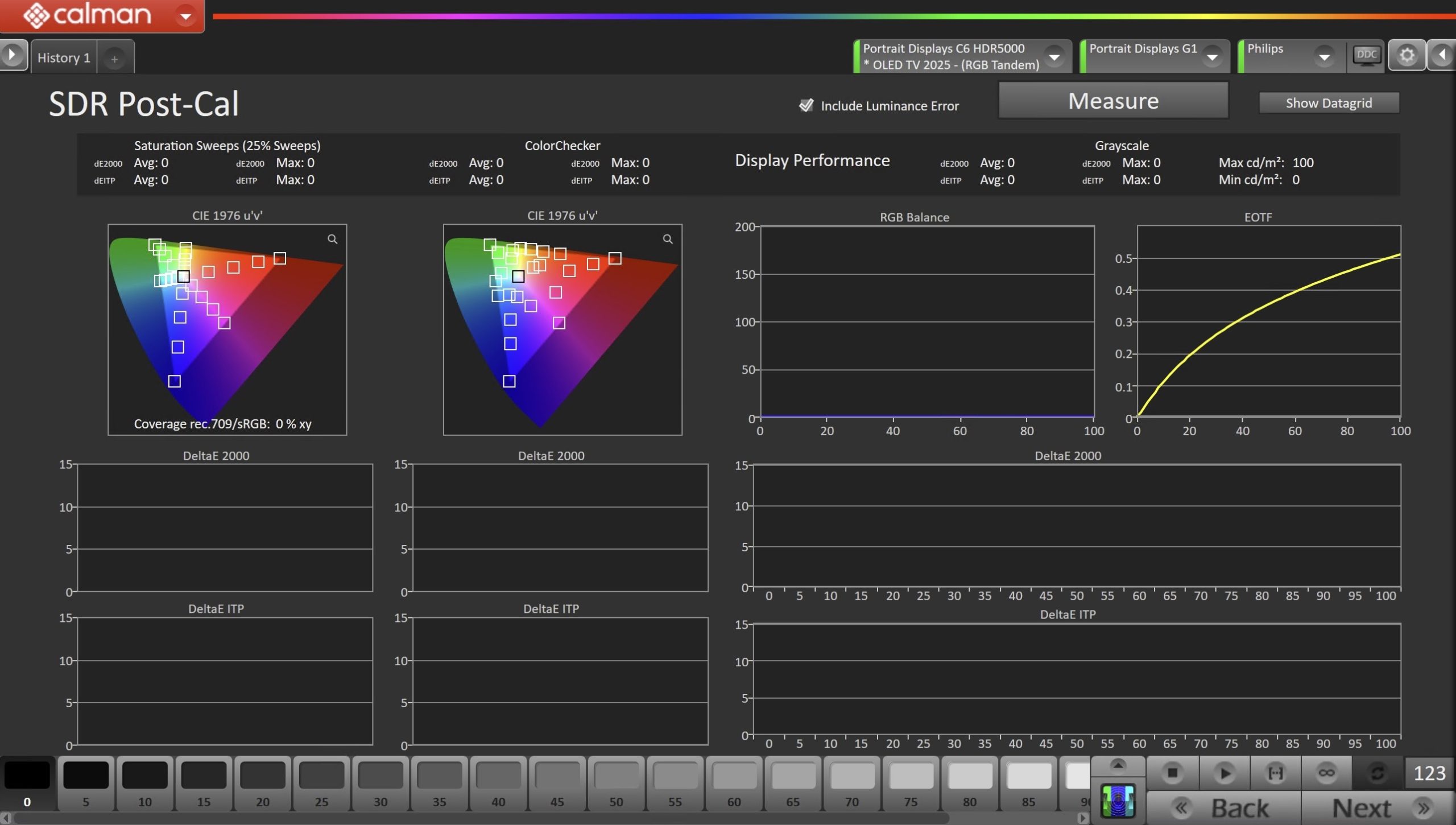
- To take Post-Calibration Measurements, click the Measure button to measure the display’s grayscale and color response.
- Click Next to proceed
- On the Calibration Complete page, you can choose to…
- Save and Report
- Select Save and Report to generate the calibration report
- View Comparison
- Displays Pre and Post Calibration measurements of the calibrated mode side-by-side
- Restart
- Returns to the beginning of the workflow where a new mode or colorspace can be selected
- Note: Does not save workflow data
- Save and Report
